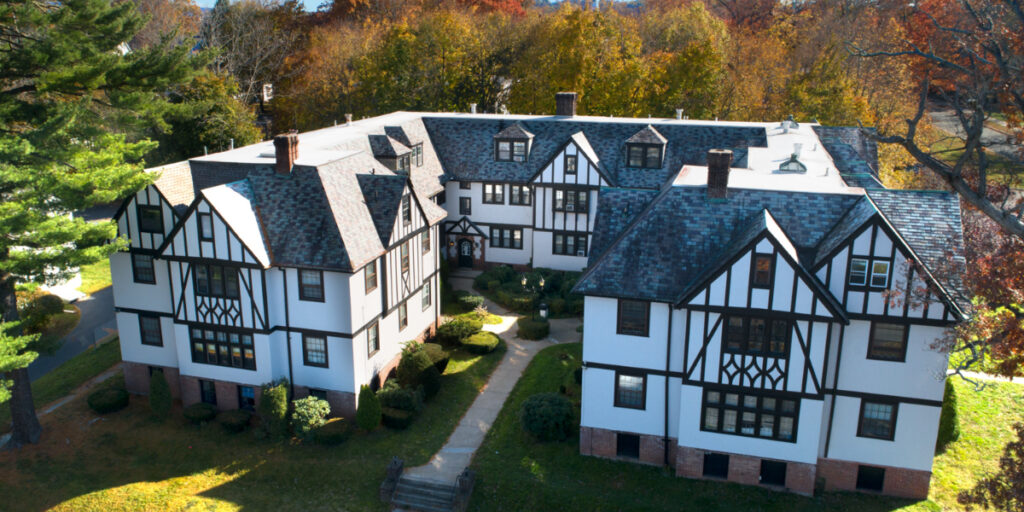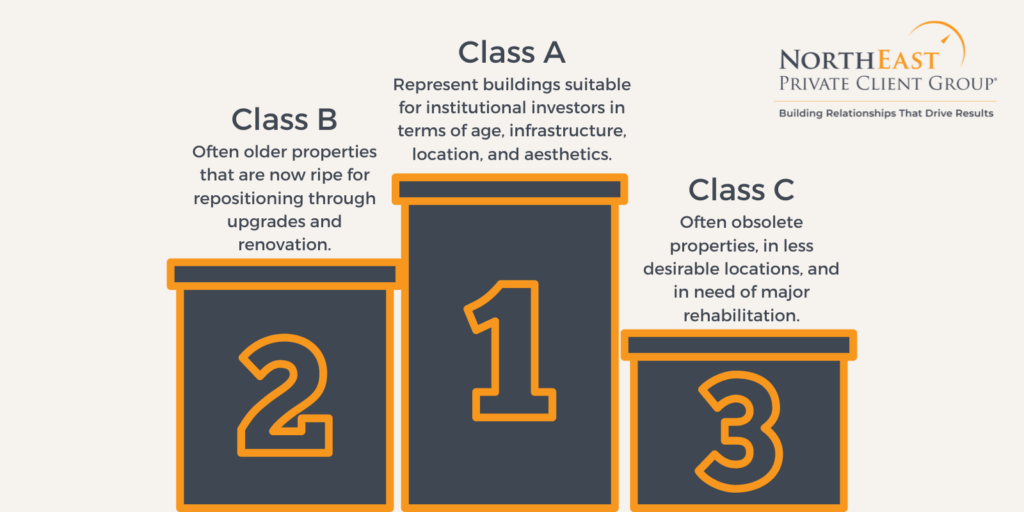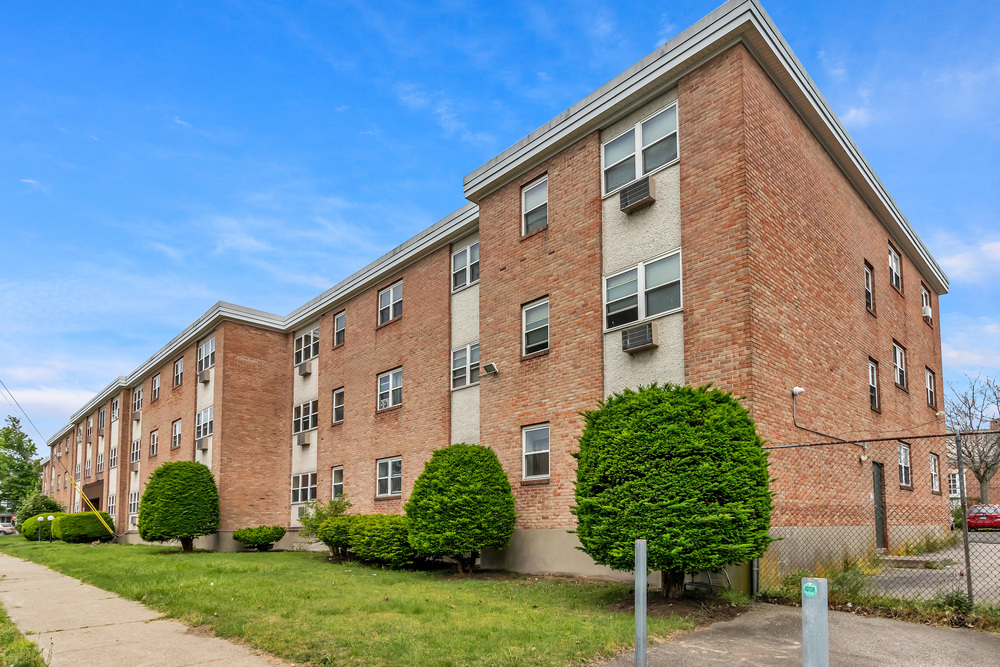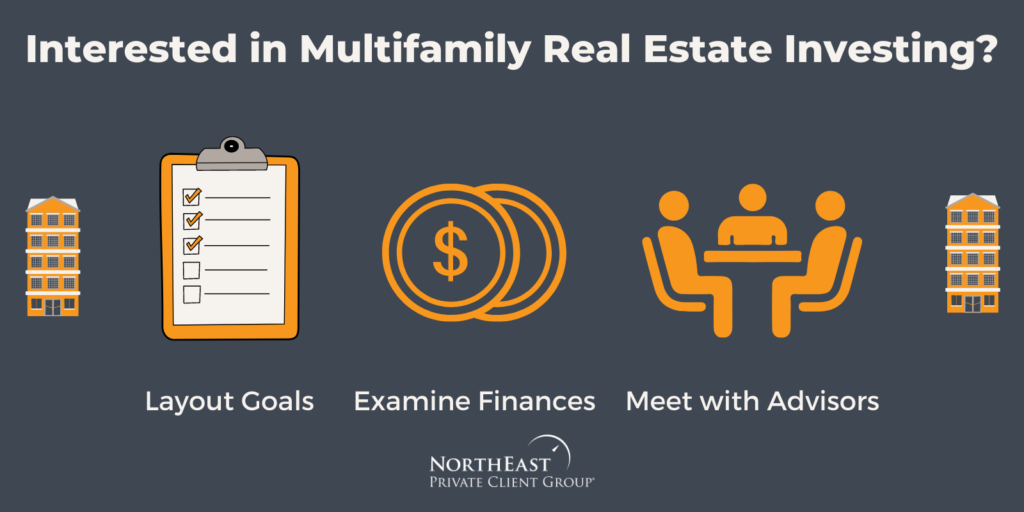Are you considering investing in commercial real estate? There are many different kinds of investment properties that you can buy. One of the most common is multifamily real estate investing.
What is Multifamily Real Estate Investing?
Whether you are new to the industry or a seasoned investor, having a multifamily investment strategy can be a lucrative activity that may yield profits competitive with alternative investments. To understand why this market is so favorable to investors, you first need to understand what is considered a multifamily property.
What is a Multifamily Property?
A multifamily property is a classification of housing where separate housing units are contained within one building or several buildings within a complex. The breakdown of these buildings can be:
- units next to one another
- units stacked on top of each other or
- other variations.
A common example of multifamily buildings is apartments.
This is considered to be a great wealth-building tool. The multifamily investment strategy is a preferred asset class for many investors whether it be on a small or institutional level. Small apartment buildings, with five or fewer units, are usually of interest to first-time commercial real estate investors.
Multifamily properties can take many forms:
- suburban complexes of different sizes and class
- mid-rise and high-rise properties,
- luxury or class B or C properties.
A multifamily property can also be part of a mixed-use property where it sits above an office or retail business in urban areas.
Multifamily Real Estate Investing vs. Single-Family Real Estate Investing
Here are some benefits of choosing a multifamily investment strategy.
Multifamily Real Estate Investing Benefits:
1.Greater Cash Flow = More Control Over Value: Multifamily properties have multiple units generating income vs. a single-family property that only produces one income. A multifamily property also allows you to create multiple streams of income from one investment.
For example, in multifamily buildings, you may be able to have paid laundry facilities or higher rents for surface or garage parking.
2. A Greater Number of Units: Having many units to rent is a positive of multifamily real estate investing and helps manage the risk of property ownership if a tenant leaves and there is a vacancy.
When a tenant leaves, there is still income generated from the other units, and you’re likely to be able to meet your financial obligations. You don’t lose all of your property’s income when one tenant moves out like you do when a family leaves the single-family rental.
3. Offers the Possibility of Mixed-Use: Some multifamily properties can have a single floor designed for retail or offices. Mixed-Use properties may create more income for you and raise the property value.
4. Ideal for Property Management: A multifamily property can be large enough to spread the costs of a property manager across all the units. A property manager will oversee the day-to-day upkeep of the building. This is ideal if you don’t want a ton of involvement in your investment property but still want the benefits of multifamily real estate investing.
5. Recession-Proof: Multifamily real estate investing is considered recession-proof even during the worst of times because people need a place to live.
6. Annual Leases: Many property owners rent their apartments on a yearly lease. This annual lease allows you to adjust rents to market prices each year.

Deciding to move to a multifamily investment strategy is a big decision. It requires a strong financial position and much planning and understanding. Here are some ideas of what to look for when choosing where to invest your money:
Location, Location, Location
Property location is one of the most important aspects of any multifamily investment strategy.
If the main goal is to fill all of your vacancies, you should look for areas with strong demographics where apartment rentals are in very high demand.
When it comes to multifamily real estate investing, cities are popular locations. It is not only the current amenities that are important, but also how developed the area is, with new schools, new healthcare facilities, or new transportation services.
The Property’s Condition
Before investing in a multifamily property, you need to think about how you plan to manage the building. Do you want a property that does not require a lot of maintenance? Or are you looking for a value-add property where you can make changes to it and increase the value?
You can invest in three different classes of multifamily properties. Class A, Class B, and Class C properties.
Each class represents the level of risk and reward combined with the condition and style of the property.
The property class you choose will influence the stability of an investment over time, as well as its growth appreciation.
Multifamily Class A, B, and C Properties:
Class A: These properties are the highest-quality buildings in their market area. They are generally newer, built in the last 15 years. The buildings have top tenant amenities and high-end finishes such as granite, marble, wood, or polished brass, that make a statement and are unique. Class A properties are usually professionally managed.
Class A properties can provide you with security knowing you are putting your capital into high-end properties, but more expensive units may struggle during times of recession.
The properties, typically located close to amenities and in a prestigious area; rental rates are the highest among multifamily properties.
Class B: The properties in this class are usually older and were once considered Class A. They are now considered ripe for repositioning through upgrades and renovations and are more functional. These buildings are often obsolete in design and amenities.
If a building has high-quality finishes but is outdated due to design, amenities, or other reasons, it can fall into Class B.
Many investors see these as value-add properties.
Class C: These buildings are typically over 20 years old, often in less than desirable locations, with older facades and limited amenities. The properties need renovation and may need rehabilitation due to physical, functional, and economic obsolescence. The low rental rates demonstrate the lack of competitiveness with better-positioned properties.

The Potential Income / Expenses:
Investors want a property that will yield them the highest income possible. But it is important to note what type of expenses your building could have because this will directly impact your income.
Property expenses can change based on location, type of building, and many other factors. They can also change over time. Here is a brief list of some expenses you can expect from your multifamily real estate property:
- Property taxes
- Insurance
- Repairs and Maintenance
- Utilities
- Landscaping and snow removal
- Security costs
Gross Lease
In a gross lease, the owner pays all expenses associated with operating and maintaining the property. The tenant will pay the owner a gross amount for rent. With that money, the owner pays the operating expenses.
Net Lease
In a net lease, the tenant pays for operating expenses.
These expenses are paid by reimbursing the landlord for their portion or directly such as with individually metered electricity.
A hybrid lease is a merger where the tenants pay for some expenses, and the owners pay for the rest.
Interested in Multifamily Real Estate Investing? How Do I Start Multifamily Investing?
If you are interested in multifamily real estate investing, consider the best way to start. Here are some things to think about:
- Layout Your Goals: Decide what type of multifamily real estate property interests you. Consider how much involvement you want in the management of the property.
Do you intend to hire a property manager, or will you manage the building yourself? Think about your desired location and building type.
Here are some items you may want to think through as it relates to your goals for multifamily real estate investing:
a. Many people choose to buy properties that are value-add. A value-added property means that the property’s value can increase by making some changes, such as upgrading amenities.
If this is your goal, what is your budget? How much are you willing to put into upgrades, and how long do you expect those upgrades to take?
b.How much income do you expect to make monthly? What is the expected return on investment?
2. Examine Your Finances: Figure out what you are financially comfortable spending and what is truly obtainable. According to Greystone, here are plenty of financing options for first-time multifamily property investors:
a.Fannie Mae and Freddie Mac Loans: These loans, also called “agency loans” since they both operate under a congressional charter, represent a significant share of the multifamily property mortgages out there today, making these loans worthy of an in-depth look.
Fannie and Freddie loans typically offer high leverage levels—75% to 80%—and low-interest rates.
Investors can use Fannie Mae and Freddie Mac loans to buy or refinance multifamily properties. A variety of loan terms are available, including pricing incentives for properties that meet “green” standards—such as reducing water and energy use—or that have an affordable housing component. Terms from both agencies can be for five, seven, 10, or 12 years, interest-only, fixed-rate, hybrid rates, or ARMs. Fannie Mae is also able to offer terms of up to 30 years.
Both Fannie Mae and Freddie Mac have “small loan” programs with terms and pricing for investors of multifamily properties with under 50 units or $7.5 million.
b.FHA Loans: These loans, also known as “FHA-insured financing” because these are government-insured loans, are often desirable for investors because they offer the longest terms, the lowest fixed rates, and the highest leverage levels— up to 85% to 90%.
FHA-insured loans for multifamily property investors are available for property purchase, refinancing, ground-up construction, and substantial rehab work.
Construction to permanent loans is a fast-growing FHA product right now because banks are tightening their construction financing requirements.
c. CMBS Loans: These loans, also called conduit loans, are commercial mortgage loans secured by a first lien against commercial property. The property and its profits are collateral for the loans. Investors can use CMBS loans for multifamily, mixed-use, industrial, retail, storage, office, and hospitality. The terms are more stringent than a loan originated under one of the above agency programs – such as lower leverage – and borrowers still need to be highly creditworthy.
You can get CMBS loans through conduit lenders, commercial banks, and investment banks.
An innovative new loan product on the market, a CMBS mezzanine loan, helps fill a capital gap on top of the traditional CMBS loan. Mezzanine loans are secured not by the property, but usually by the equity interest of the mezzanine borrower in the borrower entity under a CMBS loan.
d. Bridge Loans: Short-term loans that bridge a gap while you wait for a permanent loan to come through—are often necessary when acquiring a property. These loans typically have higher interest rates and are for terms ranging from 18 months to two years, often with an option to extend for one to two more years.
If you need to wait for an Agency loan to be approved or your building needs upgrades or stabilization, for example, improving occupancy or rental rates, to meet underwriting standards for permanent loan financing, you might be interested in a bridge loan.
Lenders often provide this type of financing in conjunction with or in anticipation of long-term permanent financing options.
e. Bank Loan: You can get a bank loan to buy, refinance, or construct a multifamily property, but terms can be very stringent. The loans are typically recourse loans, meaning the bank could go after all the borrower’s assets and not just the property securing the loan if you default. In addition, banks are typically less likely to offer 80% leverage, interest-only options, and they typically require tax returns as part of their underwriting.
Ultimately your goals or needs may be best served by a bank loan, perhaps because of the structure of the loan, the pricing, or restrictions imposed upon the property in conjunction with certain Agency loans.

3. Meet with a Trusted Real Estate Advisor: Talking to a trusted real estate investment professional is a great way to start a discussion about your goals and finances. They will present you with the best options and help move the process forward. Real estate advisors are experts in their field and market territory and provide honest and realistic information.
It’s important to understand the liquidity of the property; how quickly a property can be bought or sold on the market for a price that reflects its current value. A real estate advisor can review all of this information with you.
You must also understand your risk tolerance. Investment risk is impacted by many different factors, including location, tenant’s credit, type of lease, class of property, and the supply and demand of that type of property.
4. Knowledge of the Industry: There is a lot involved in multifamily real estate investing, and it’s very important to have a basic understanding of the industry. Here are three key pieces of information to know and understand according to MIH Mastermind:
a.Calculate your Net Operating Income (NOI): Calculating the Net Operating Income is the best way to sift through the most profitable multifamily asset deals among all the options on the table. Investing in a multifamily asset may result in multiple income sources from rental fees, storage fees, parking fees, etc. But, there are also expenses such as repairs and maintenance.
When comparing the profitability of properties and in the event that you lack neighborhood comps a good rule of thumb is the 50% rule.
The 50% rule says to take half of your expected income and assume that it will go to expenses.
Cash Flow Calculation: To figure out how much you can pay off in monthly mortgage payments, be sure to take into account the estimated monthly cash flow.
To calculate the monthly cash flow, deduct the monthly mortgage from the Net Operating Income. Once you have an approximate cash flow dollar amount, you can determine the viability of any given multifamily asset deal.
Calculate Capitalization Rate (Cap Rate): Lastly, you’ll want to calculate the Capitalization Rate. The capitalization rate, the rate of return on a real estate investment, is an apples-to-apples comparison tool you can use when selecting a property.
The cap rate helps you determine the level of risk associated with the investment. A safe cap rate value ranges between 1-2%.
Bear in mind that a safe or low cap rate also means low risk and low reward, while the opposite is true of higher cap rates.
To calculate the cap rate follow the following formula:
CAP RATE =Annual NOI/Purchase Price.
5. Different Types of Investing: There are different ways and methods to explore when it comes to multifamily real estate investing. Here are a few:
a. BRRRR (Buy, Rehab, Rent, Refinance, Repeat): A real estate investment strategy that involves flipping distressed property, renting it out, and then cash-out refinancing the property to fund further rental property investment.
b. Value-Add: Buying a value-add property can be a great investment strategy when you want to increase your profit. To push the value of a property, you may choose to: upgrade many parts of the property, raise rents, or repurpose space on the property for its highest and best use.
c. Adaptive Reuse Building: This strategy involves repurposing old structures for an entirely new purpose. This process allows you to preserve some of the building’s historical elements while simultaneously being environmentally beneficial. For more information on adaptive reuse buildings, visit our blog post: Why Adaptive Reuse of Industrial Buildings is a Good Investment.
d. Qualified Opportunity Zones: The IRS defines qualified opportunity zones as economically distressed communities where new investments, under certain circumstances, may be entitled to advantageous tax treatment. The qualified opportunity zones were added to the tax code under the Trump Administration as part of the Tax Cuts and Jobs Act of 2017. This legislation made several notable tax law changes, including individual income tax, itemized deductions, marginal tax rates, and more.
The purpose of qualified opportunity zones is to encourage real estate investors to drive economic development in troubled areas.
These investments spur economic growth in the areas that need it most.
For more information on qualified opportunity zones, read our blog post: How to Invest in Qualified Opportunity Zones (Map Included).

Tips for Multifamily Real Estate Investing:
- Find Your 50%: You must run the numbers during any investment opportunity. Consider the difference in expected income and expenses. The resulting number will give you an idea of the cash flow. Something to keep in mind is the 50% rule. Take your expected gross income and cut it in half to estimate the possible net operating income of the building.
- Calculate Your Cash Flow: If you have all of the information at your disposal, they will not need the 50% rule. Instead, you can use the correct numbers to calculate net operating income and your calculated cash flow to justify if the investment is worth it or not.
- Figure Out Your Cap Rate: Investors need to understand a property’s yield. Find your cap rate by dividing the net operating income by the purchase price.
Is Multifamily Real Estate a Good Investment?
Many considerations favor multifamily real estate investing, including lower initial investment as it relates to purchasing price, recession-proof, and tangible assets, to name a few. In general, multifamily real estate can be a good investment.
Investing in multifamily real estate is complex. Make sure you understand all of your options. Are you interested in learning more? Call us at (203) 692-2420, (857) 990-6800, or (904) 544-9200 today to speak with one of our trusted real estate investment advisors.


Mortgage Broker in Sydney |
Nice post so far. Thanks for sharing your amazing blog.
Mortgage Broker in Lane Cove |
Great tips provided. Thanks a lot.